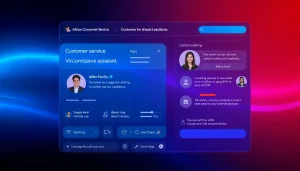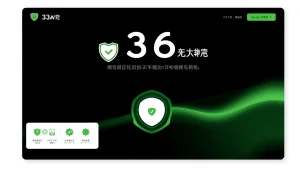Advancing Your Product Development Strategy for Market Success
Understanding the Basics of Product Development
Defining Product Development
Product development is a systematic process of bringing a new product to market or refining an existing product to ensure its alignment with consumer needs and market demands. It involves a series of steps from ideation, design, prototyping, and testing, to the final launch and beyond. The scope of Product Development encompasses various disciplines, including marketing, engineering, design, and business strategy, integrating these elements to create compelling and competitive products.
The Stages of Product Development
The product development process is typically broken down into several key stages:
- Idea Generation: This is the inception phase where ideas are generated through brainstorming sessions, market analysis, and customer feedback.
- Idea Screening: In this phase, the ideas generated are critically assessed for feasibility and market viability.
- Concept Development and Testing: The best ideas are developed into detailed concepts and tested with target audiences to gauge their interest and reception.
- Business Analysis: Here, potential sales, costs, and profitability are evaluated to ensure the project is financially viable.
- Product Development: The actual creation of the product occurs in this phase, which includes designing, engineering, and preparing for production.
- Market Testing: The product is introduced to a limited audience to monitor its performance before a full-scale launch.
- Commercialization: If the product passes market testing, it is launched broadly accompanied by a marketing strategy.
- Post-Launch Review and Perfecting: After launch, the product’s performance is monitored, and adjustments are made based on customer feedback and market reaction.
Key Benefits of Effective Product Development
Effective product development brings numerous advantages that can significantly contribute to a company’s success:
- Market Alignment: Products developed are closely aligned with market demands and consumer preferences, increasing the likelihood of acceptance.
- Cost Efficiency: By identifying the right product features and pricing through thorough analysis and testing, businesses can reduce wasted resources.
- Competitive Advantage: Innovative and well-timed product launches can help businesses stay ahead of competitors in rapidly changing markets.
- Long-term Growth: A well-structured product development strategy supports sustained business growth through product diversification and improved customer engagement.
Essential Steps in the Product Development Process
Market Research and Analysis for Product Development
Market research is foundational in understanding the consumer landscape, identifying trends, and uncovering gaps in the market. The process involves gathering data through surveys, focus groups, and industry reports. Analyzing this data helps in understanding consumer needs, behaviors, and preferences. Furthermore, companies should assess competitors to evaluate their strengths and weaknesses. This comprehensive analysis aids in crafting a product that meets the targeted specifications and stands out in the marketplace.
Concept Development and Design
Following market research, the next step is concept development and design. This phase involves brainstorming sessions that translate research insights into tangible concepts. Sketches, wireframes, and prototypes might be produced to visualize different ideas. At this stage, collaboration among design, engineering, and marketing teams is crucial, ensuring the product not only meets functional requirements but also resonates with the intended audience both aesthetically and practically.
Prototyping Techniques in Product Development
Prototyping is a pivotal stage where ideas are turned into tangible products. Different prototyping techniques can be employed, including:
- Low-Fidelity Prototyping: Using simple materials, sketches, or digital mockups to convey the basic concepts.
- High-Fidelity Prototyping: Creating near-final versions of the product that can be used for extensive user testing.
- 3D Printing: Utilizes additive manufacturing technology to produce prototypes quickly, allowing for rapid iteration and design refining.
Effective prototyping enables stakeholders to visualize and interact with the product early in the development process, facilitating valuable feedback.
Best Practices for Successful Product Development
Incorporating Customer Feedback
Customer feedback is integral to successful product development, providing direct insights into consumer preferences. Engaging with customers through surveys and focus groups during the prototyping phase ensures that their voices are part of the design process. Implementing feedback loops allows teams to iterate on the product based on real user experiences, leading to higher satisfaction post-launch. Companies should prioritize channels enabling ongoing dialogue with users, such as social media or customer support platforms.
Agile Methodology in Product Development
Adopting an Agile approach enhances flexibility and responsiveness within product teams. Agile methodology involves iterative development, where products are released in small increments, known as sprints. Each sprint concludes with a review and refinement session based on stakeholder feedback. This system encourages constant improvement and allows teams to pivot quickly in response to market changes. Adopting methods like Scrum or Kanban can further streamline processes, facilitate cross-functional collaboration, and foster a culture of continuous learning and adaptation.
Cross-functional Team Collaboration
Successful product development hinges on collaboration across various departments. Inviting team members from engineering, marketing, design, and sales early in the process ensures diverse perspectives are considered, which enriches the product vision. Regular inter-departmental meetings and workshops can enhance communication, minimize silos, and foster a shared understanding of goals and challenges. The synergy generated from cross-functional collaboration can lead to innovative solutions and faster problem-solving.
Challenges in Product Development and How to Overcome Them
Managing Resources and Timelines
One common challenge in the product development process is managing resources and adhering to timelines. It is vital to set realistic goals and allocate resources efficiently. Utilizing project management tools can help track progress and manage tasks, ensuring that deadlines are met. Incorporating buffer time in project timelines allows for unexpected delays without derailing the entire process. Regular check-ins with team members can facilitate transparency and identify issues early, promoting timely resolutions.
Navigating Compliance and Regulations
Compliance with industry regulations and standards is critical to successful product launches. Failing to meet these requirements can result in costly fines and reputational damage. It is essential for product development teams to remain informed about relevant regulations throughout the development process. Conducting a compliance audit early in the planning stages can help identify potential challenges. Collaborating with legal or compliance experts can assist in navigating complex regulations that may apply to specific products or industries.
Mitigating Risks in Product Development
Risk management is a crucial aspect of product development. Risks can range from financial setbacks to technological failures and shifting market dynamics. Assessing risks at each stage allows companies to develop contingency plans. Utilizing tools like risk matrices can aid in visualizing and prioritizing risks based on their impact and probability. Furthermore, fostering a culture of agility within teams enables prompt reactions to emerging threats, reducing potential disruptions to product launch.
Measuring the Success of Your Product Development Efforts
Key Performance Indicators for Product Development
Establishing Key Performance Indicators (KPIs) is essential to measure the effectiveness of product development efforts. Common KPIs include:
- Time to Market: Tracking the duration of the development process helps identify efficiency improvements.
- Cost Variance: Comparing actual costs to budgeted costs highlights financial performance.
- Market Penetration: Assessing the product’s uptake in the target market reveals success in meeting consumer needs.
- Customer Retention Rates: Evaluating how well existing customers engage with and refer the product indicates its longevity in the market.
Analyzing Customer Satisfaction and Feedback
Post-launch analysis of customer satisfaction is critical to understanding how well the product meets user expectations. Gathering customer feedback through surveys, reviews, and support interactions provides valuable insights. Companies should analyze feedback trends and develop metrics to quantify customer satisfaction, such as Net Promoter Score (NPS). By actively responding to customer concerns and successes, teams can improve future product iterations and foster loyalty.
Iterating Based on Market Response
The product development process does not end at launch; it is vital to monitor market response continuously. Iteration based on market feedback allows businesses to fine-tune features, address issues, and capitalize on consumer demand trends. Utilizing analytics tools to track usage patterns helps identify opportunities for enhancement. Continuous improvement cycles can keep products relevant and desirable, ensuring long-term success in a competitive landscape.













Post Comment